GUATEMALA - MAY 2008
May 7 - El Estor

Morning at the Association for the Integral Development of El Estor (AEPDI), an NGO founded by Daniel Vogt, that provides support to Maya-Q'eqchi' communities of El Estor to resist the environmental and human impacts of nickel mining in the area. A fuel shortage in the region almost prevented our visits to neighboring communities.

Enjoying the ride from El Estor to visit the community of Lote 9 and Barrio La Revolución.
(Photo credit: Catherine Nolin)

Along the route we passed the Canadian Skye Resources owned Guatemalan Nickel Company (CGN) site. Along the way, we passed the gated 'town' that once housed mine executives along with their families. Since the mine shutdown in 1981, these residences have remained empty.

The sign reads: "CGN - Responsible Mining".

The $275 million Canadian Inco owned EXMIBAL (Empresa Exploraciones y Explotaciones Mineras de Izabal), which sits on one of the largest nickel deposits in the world, actively mined nickel for only two years of its 40 year license which began in the late 1960's. Its abrupt closure financially devastated workers and their families that relocated to work the mine. More than an eyesore, it devastated the manatee habitat and the surrounding environment. Canadian Skye Resources purchased EXMIBAL in 2004 and began exploration under CGN. Following a history of forced evictions of Maya-Q'eqchi' campesinos, accused of "land invasions" while trying to sustain their families through subsistence farming, Skye Resources sold the nickel mine in June 2008 to Canadian-owned HudBay Minerals Inc for approximately C$437 million.

The community of Lote 9 - "No Trespassing". This sign was erected once the company began trespassing and drilling exploration sites.

Lote 9 community in front of their primary school house, welcoming our visit even though foreigners have significantly impacted their lands and lives. I wondered what the communities were thinking, seeing our delagation, many Caucasian, driving through their villages. Did they feel anger, fear, frustration, like we were trespassing? Possibly, but the community of Lote 9 expressed appreciation for our visit and our solidarity.

Each meeting began with introductions; who we were, what our backgrounds were, and why we were there. Although nervous, I was really
honored and humbled to introduce our group to people who have a history of displacement, struggle, violence, resistance, persistence, and survival.
(Photo credit: Catherine Nolin)
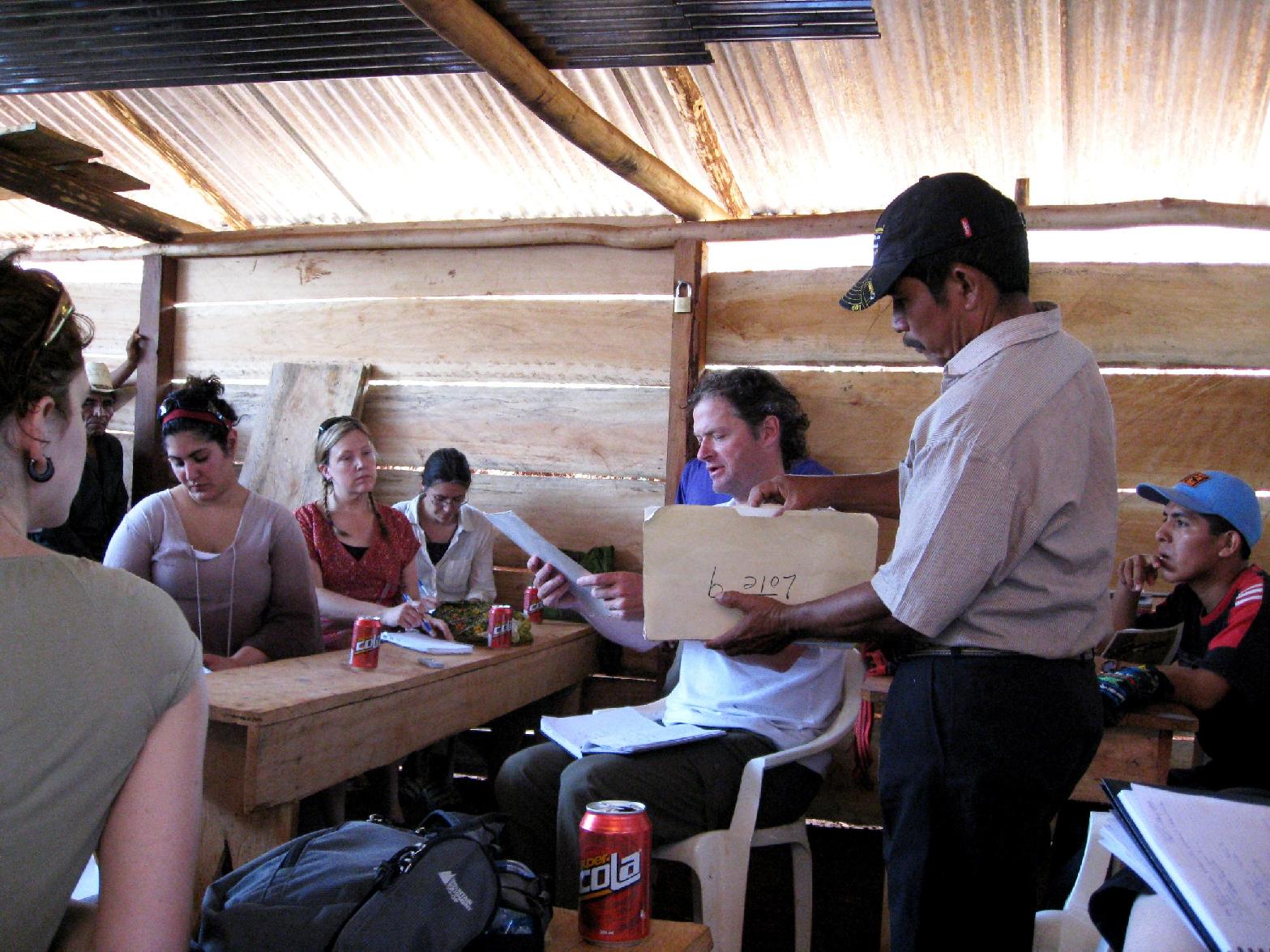
The community meeting addressed land ownership and community response to inevitable mining operations on their traditional territory.
(Photo credit: Catherine Nolin)

These original documents contain proof of Lote 9's Land Rights and Title which is in dispute with the mining concessions. Grahame mentioned that documents such as these often go missing or are destroyed in villages and official offices so that Land Rights and Title can be disputed. He suggested that the community copy, photograph, and hide them to prevent such an occurrence.


An original receipt indicating Lote 9's final land title payment of $13,140 quetzales (equivalent to $1,837 Canadian dollars). In total, Lote 9 paid $32,469 quetzales or approximately $4,600 Canadian dollars to the community of El Estor for their land title.

A map of the territories of Lote 9 and surrounding villages. The yellow sections are the property of the former EXMIBAL. Lote 9 occupies approximately 13.5km2 of land just north of the mining concession. Lote 9 moved to this region of their territory from higher in the hills to protect their property line which continues to be arbitrarily moved by the company as they drill for minerals.

Evidence of drilling is easy to locate on Lote 9's territory.

This drill hole was one of many located in the agricultural fields.

The community explains that their water supply has been drastically reduced since the drilling occurred.
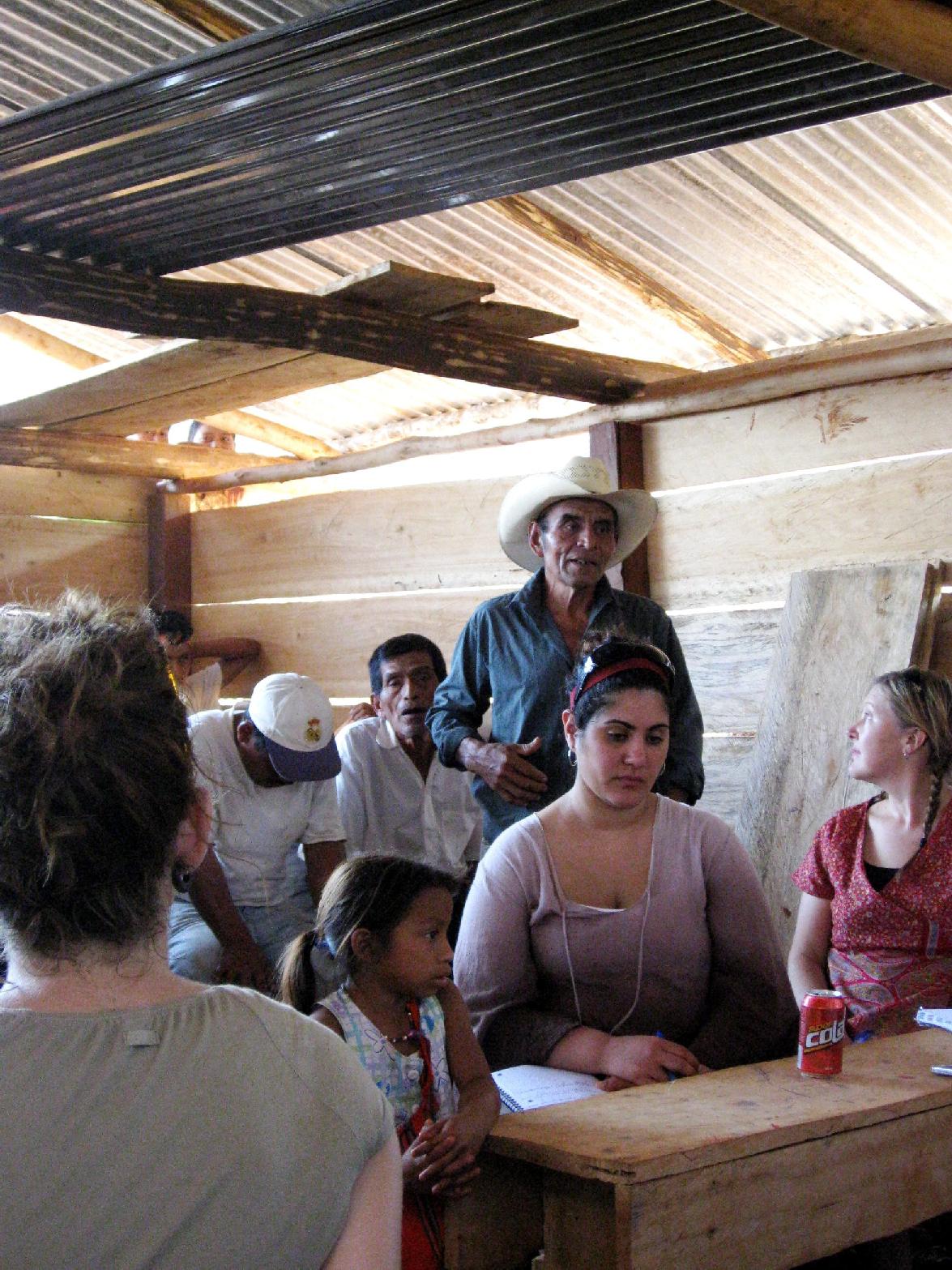
Reginaldo Teckip asks "Where would we go? We've been here since 1970.
We did everything the company wanted, and they are still coming. Last August 2007 we got an eviction notice but it was not carried out. What do we do? Do I
keep planting my crops? Is the company going to keep coming back and destroying these lands?" Grahame responded by explaining that
the only way forward is through unity and knowledge sharing between communities.
(Photo credit: Catherine Nolin)
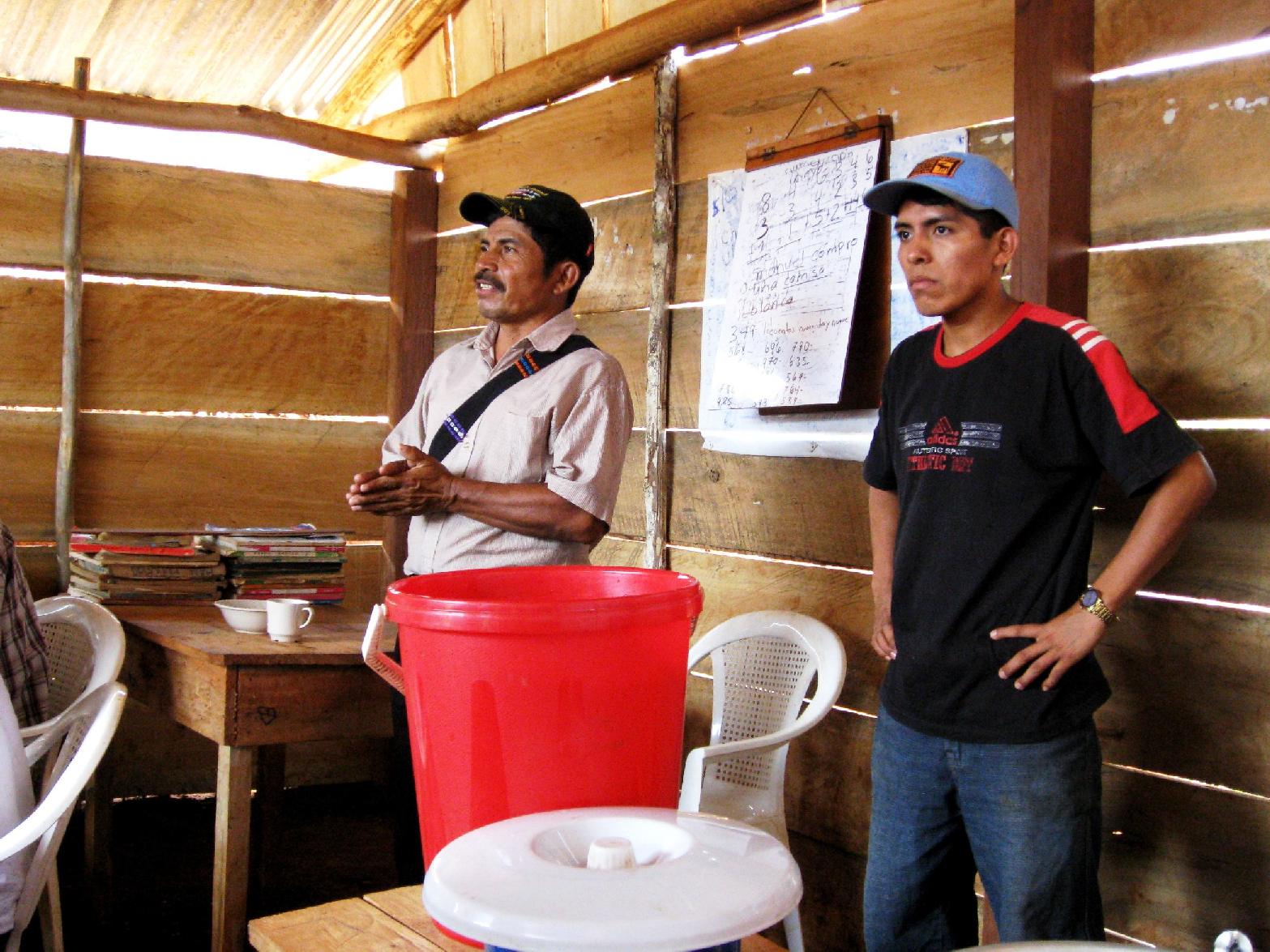
Despite the hardships the community continues to face, they were gracious and appreciative of our visit and offered us a traditional meal of rice, beans, and tortillas.
(Photo credit: Catherine Nolin)
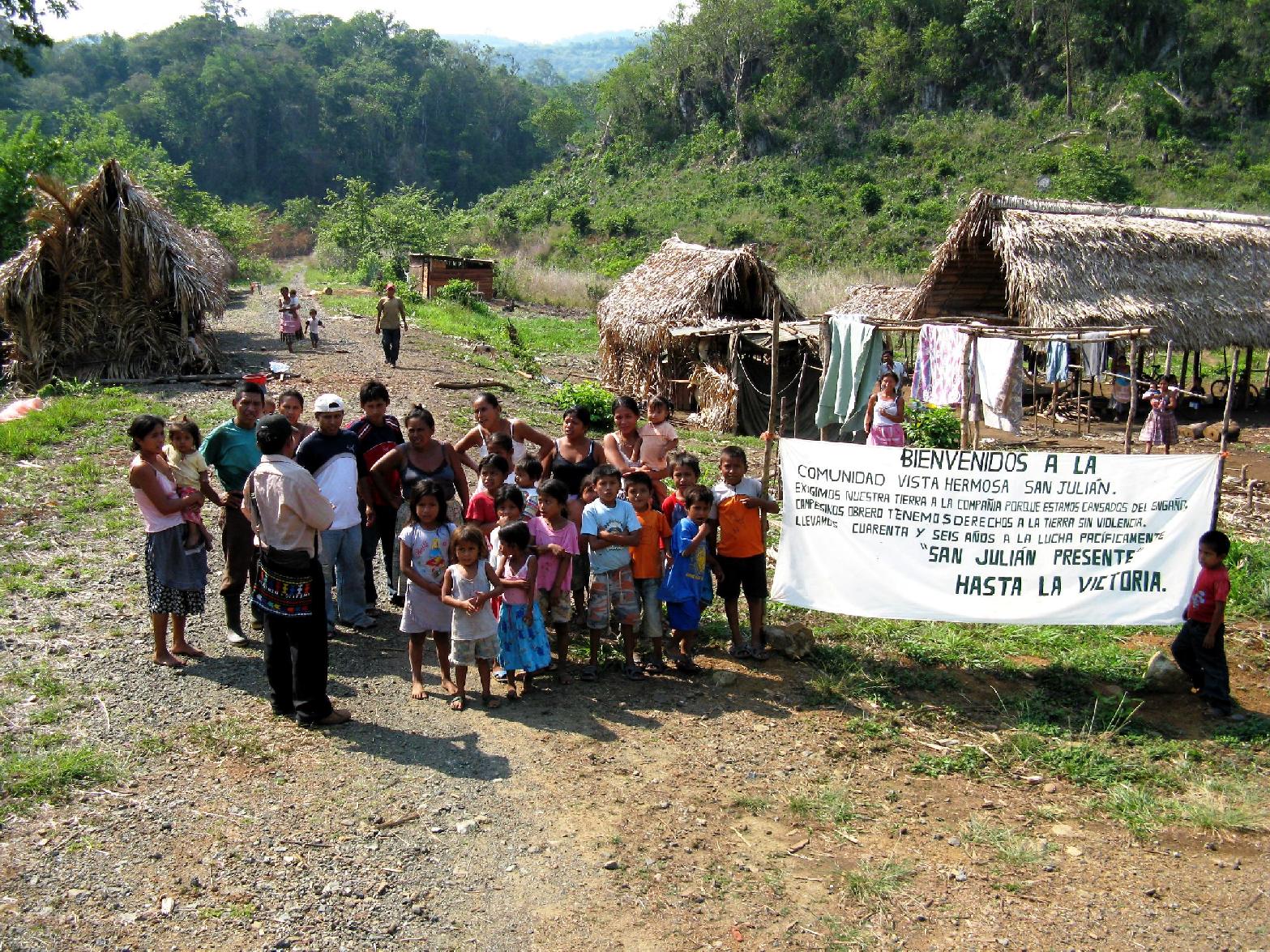
After leaving Lote 9, we passed by the community of Vista Hermosa of San Julian and found a sign stating basically that
they "demand that their land not to be taken by the company. We are working farmers who have a right to the land without violence. They have been
peacefully resisting for 46 years."
Obviously, another impacted community.
(Photo credit: JP Laplante)
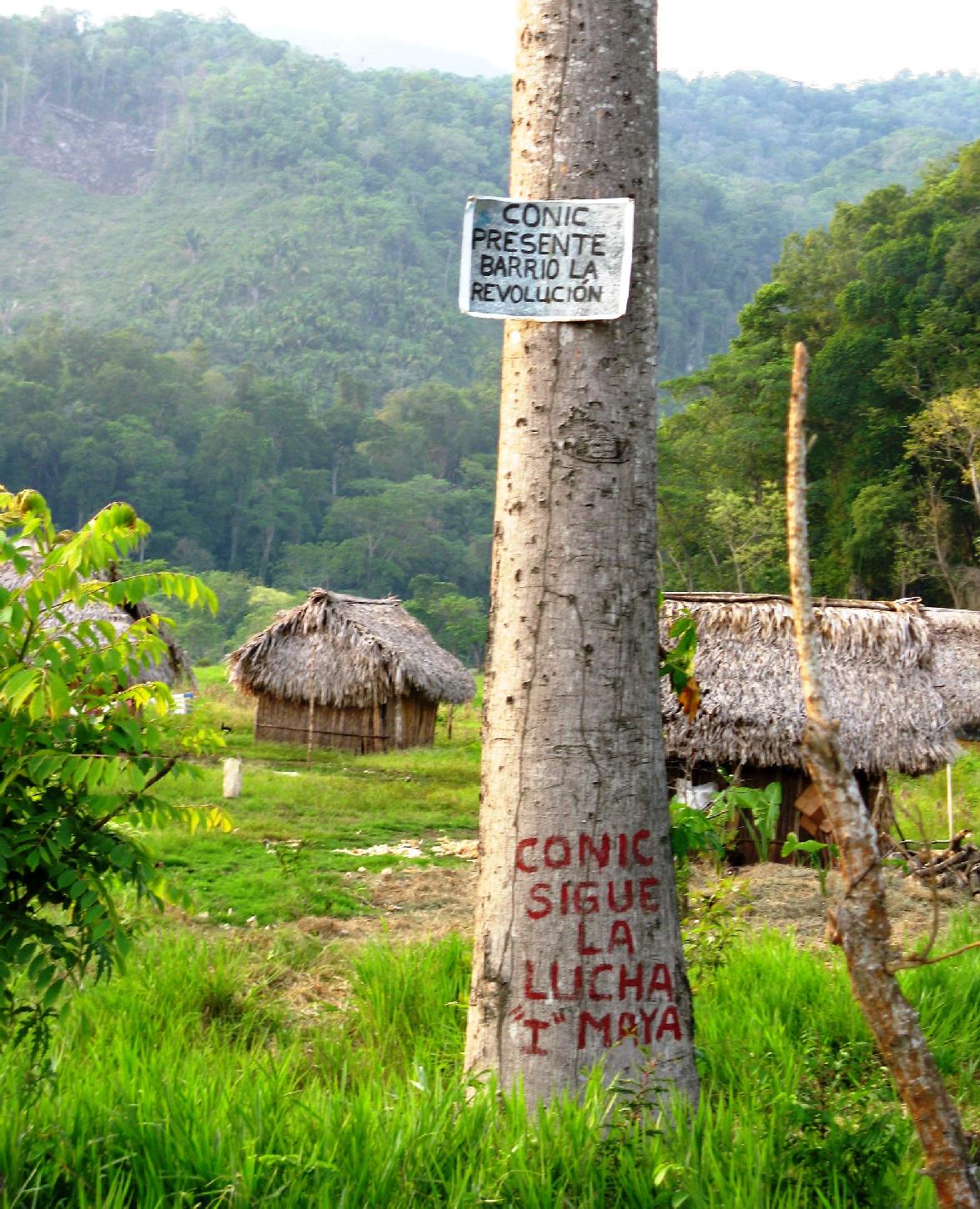
The community of Barrio La Revolución, near Chichipate, west of El Estor and the CGN mine site.
(Photo credit: JP Laplante)

Many community members attended our afternoon meeting in Barrio Revolución.
(Photo credit: Catherine Nolin)
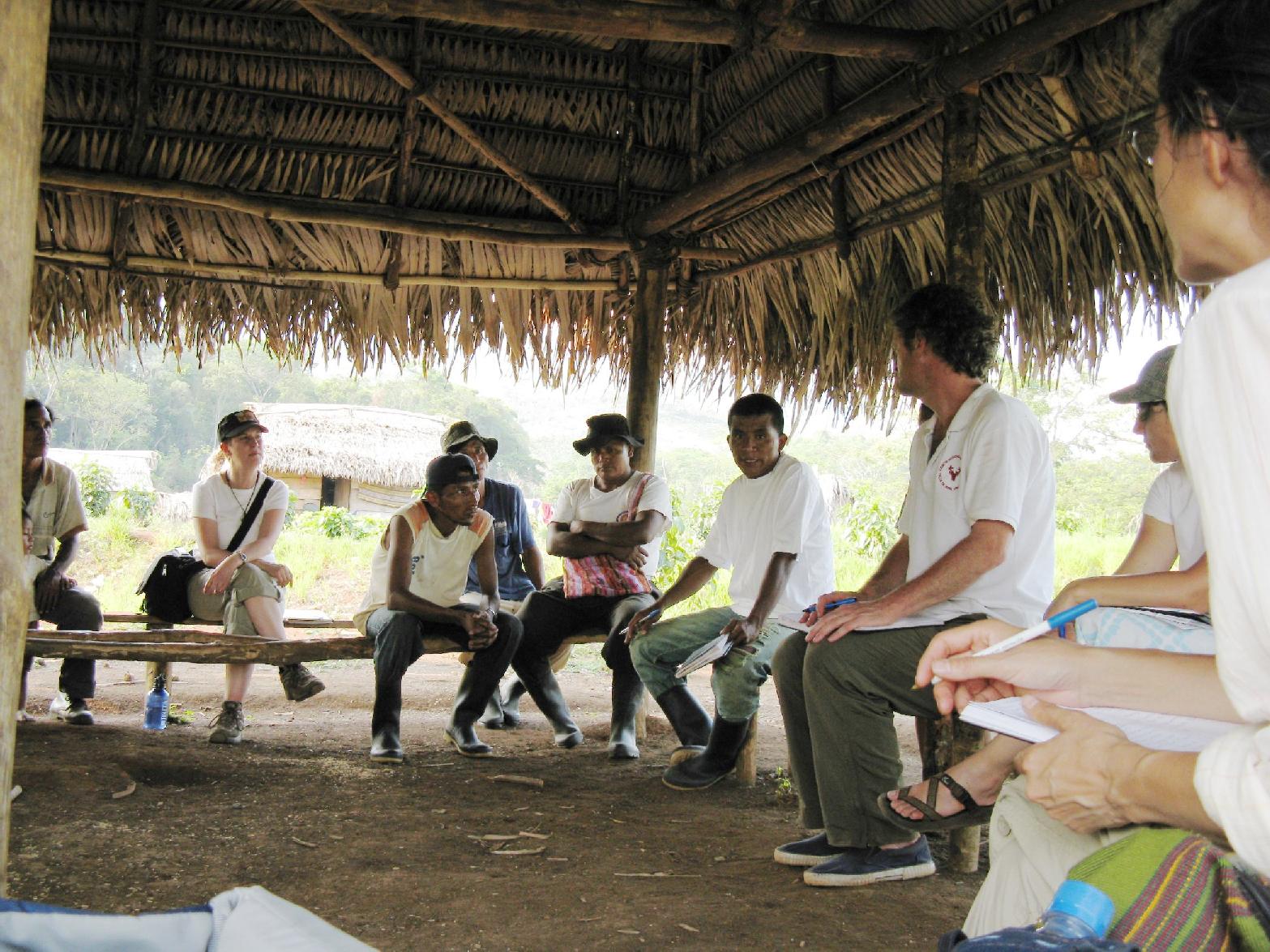
Alfredo Ical (President of Barrio La Revolución) and Tomas Chomuc (Vice-President) explain to us the
forced evictions that the community underwent at the behest of Skye Resources. The community was given 30 minutes to gather their possessions and
take down their houses. The community refused because they did not want to consent to the eviction. The community peacefully retreated and
the army and police proceeded to burn down their houses. The land remained unutilized by the company, in February of 2007, the community began to
return and rebuild their livelihoods. Although the community still waits for proof of their land ownership they have been told that if they rebuild
their houses twenty times they will be burned down twenty times. Two subsequent eviction notices have been served, but have not been enforced.
(Photo credit: JP Laplante)
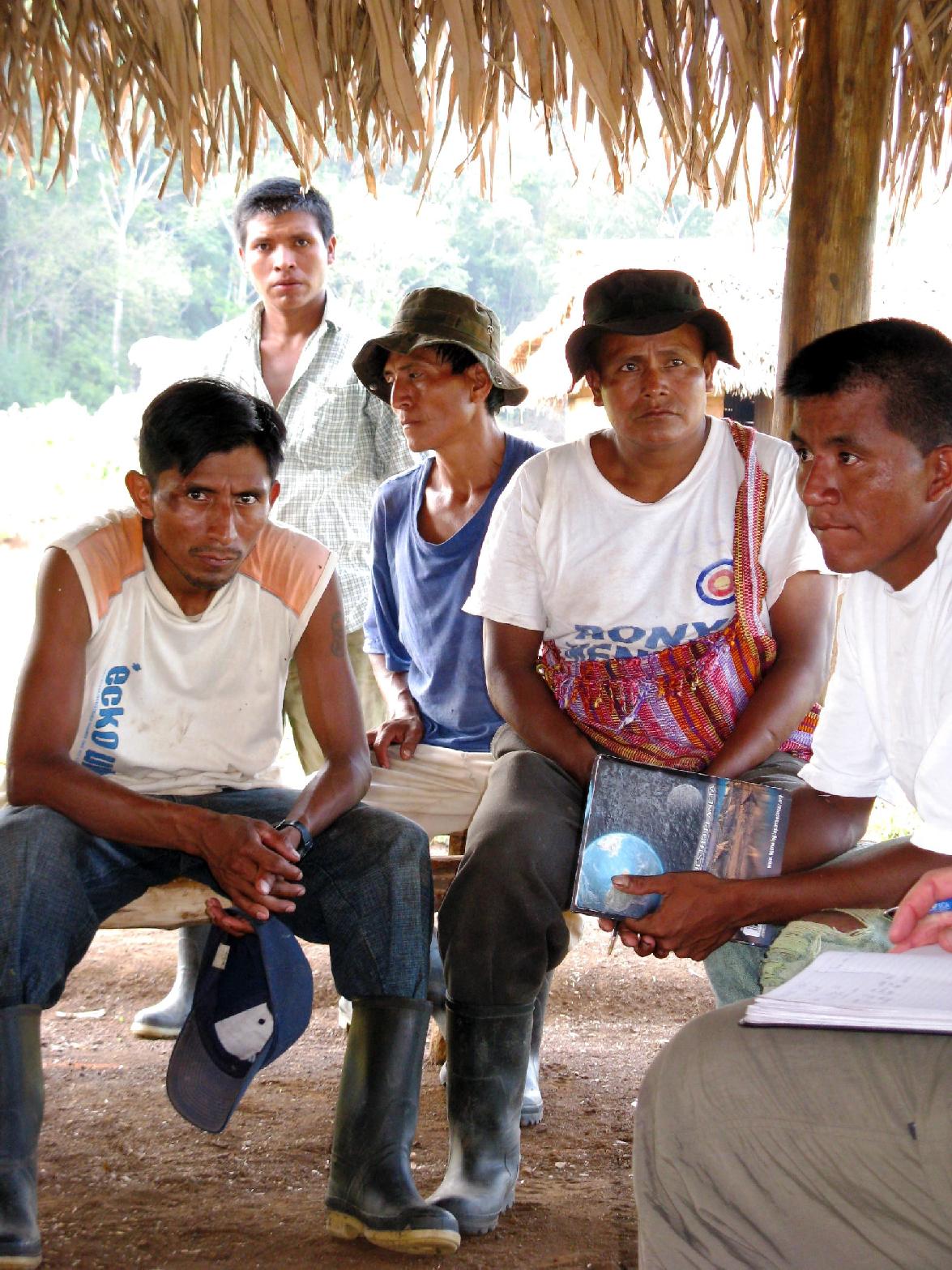
The varied expressions of people that have experienced forced eviction and subsequent unofficial
reoccupation with the uncertainty that follows. For a short documentary of their January 2007 forced eviction by Skye Resources, click here.
(Photo credit: JP Laplante)
